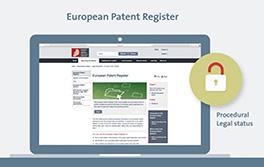The role of the EPO
Last updated: 15.11.2022

- The EPO’s role
-
The European Patent Organisation's 39 member states have entrusted the European Patent Office (EPO) with the examination of European patent applications and the grant of European patents. Examination is performed in strict accordance with the law set by these member states: the European Patent Convention (EPC). This means that the general decision on what is patentable and what is not is taken by the member states, which are represented on the Organisation's Administrative Council and for fundamental changes to the law come together in a diplomatic conference. The EPO's role is to apply the rules laid down by the member states to specific cases, i.e. individual European patent applications and European patents.
In the field of biotechnology, the rules of the EU's Directive on the legal protection of biotechnological inventions ("Biopatent Directive") also apply. The Directive became part of the EPC in 1999. The EPO also follows the rulings of the European Court of Justice on the correct interpretation of the Directive, and has incorporated such rulings into its working practice.
At the EPO, biotechnology represents about 4% of all patent applications: in 2021, of the 188 600 European patent applications received, 7 611 concerned biotechnology. Biotech patents mostly relate to pharmaceutical products (70%), followed by industrial processes (26%) and agriculture (just 4%).
In the vast majority of cases, European patent applications and European patents in this field are uncontroversial. Public debate concerns a very small number of cases related specifically to animals and plants.

As a public international organisation, the EPO is committed to co-operation and outreach, including when it comes to biotechnology inventions. The EPO therefore engages with all patent system stakeholders and the public in open and transparent discussions. We closely co‑operate with the EU institutions and regularly meet with stakeholders such as NGOs to give them information, provide technical expertise and discuss important developments in the field of biotechnology patents. In 2016 the EPO formalised close co-operation with the Community Plant Variety Office - the EU agency responsible for granting plant variety rights - on matters relating to plant patentability and innovation in the plant sector.
- Patent examination at the EPO
-

Patent protection can be sought for all inventions that fall within the red, white and green biotechnology fields. Applications might be for microbiological processes, cells or nucleic acids isolated from the animal body or for immunological assays, for example. They are evaluated by an "examining division" consisting of three highly qualified scientists and/or engineers - for biotechnology inventions experts in the specific area of biotechnology at issue. Whenever necessary, an expert in patent law is invited to consult the division as a fourth member. A European patent is only granted if all the substantive and formal requirements of the law are fulfilled.
The EPO examines all patent applications diligently. Across all technologies, fewer than half of applications become a patent. In biotechnology, the grant rate is significantly lower and stands at less than 30%. A granted patent will often differ from the application filed because of amendments that result in a scope of protection commensurate with the contribution to the field. The Guidelines for Examination in the European Patent Office include a section specifically dedicated to the examination of biotechnology inventions.
Anyone who considers that a particular European patent should not have been granted - be they a company, NGO or individual - can oppose it within nine months of its grant. The opposition statement must be reasoned and supported by evidence, for example published documents. The European patent is then re-examined by a new division of three or four experts, and both the patent proprietor and the opponent are heard in a public hearing. The outcome can be rejection of the opposition, maintenance of the patent in a more limited form or revocation of the patent.
For decisions taken in examination and opposition proceedings review can be sought before the EPO's independent Boards of Appeal. They have the power to set aside decisions of examining and opposition divisions that were not taken in line with the legal requirements, and in doing so can limit or revoke granted European patents or order the grant of one.
European patents are also subject to the jurisdiction of the national patent courts in the European Patent Organisation's member states. In those states where a European patent takes effect, its validity can thus be challenged again. With the advent of the Unitary Patent system, it will be possible to challenge the validity of patents granted by the EPO before the Unified Patent Court, a specialised international court.
- Transparency
-
The patent system facilitates transparency. Patent applications are published 18 months after filing, and so disclose detailed information about the latest technical improvements on which competitors can build. File inspection at the EPO enables the public to monitor examination proceedings and to submit observations as a third party. Applications relating to a particular biotechnology field can easily be identified using the Cooperative Patent Classification.
